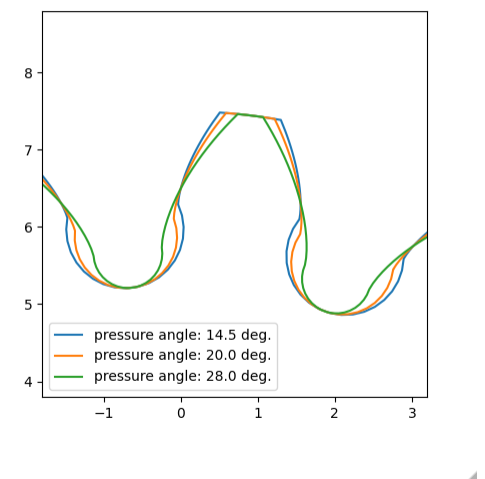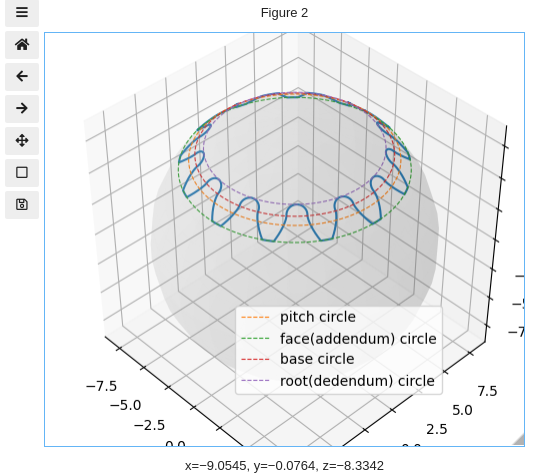Work in progress...
Might be unstable, but somewhat usable.
Can generate the following types of gears:
- Spur gear
- Helical gear
- Herringbone gear
- Ring gear (helical/herringbone versions too)
- Planetary gearsets
- Straight and helical bevel gears
- Gear rack
Assuming you already have CadQuery environment installed (if not, please follow instructions here first). Note: The latest developer version of CadQuery is required. The release version 2.1 will not work.
To install with pip:
pip install git+https://github.com/meadiode/cq_gears.git@main
Or, alternatively, clone this repo and run setup.py as follows:
python3 setup.py install
CQ_Gears depend on numpy, which should be installed automatically if you don't have it.
To see provided examples (in a form of Jupyter notebooks) you also going to need Jupyter together with jupyter-cadquery.
Also, some example notebooks use matplotlib and matplotlib widget(ipympl), you might want to install them as well.
Minimal example:
import cadquery as cq
from cq_gears import SpurGear
# Create a gear object with the SpurGear class
spur_gear = SpurGear(module=1.0, teeth_number=19, width=5.0, bore_d=5.0)
# Build this gear using the gear function from cq.Workplane
wp = cq.Workplane('XY').gear(spur_gear)
show(wp)The result should look like this:
Note that instantiating SpurGear (or any other class from cq_gears) will not create a solid body right away. Creating object just pre-calculates some important parameters and curves that later will be used during build phase.
To actually build the solid object, you shall pass the created gear object to the gear or addGear functions from cq.Workplane
Another example:
spur_gear = SpurGear(module=1.0, teeth_number=13, width=5.0, bore_d=5.0)
wp = (cq.Workplane('XY')
# Pushing an array of 4 points with spacing equal to the gear's pitch diameter
.rarray(xSpacing=spur_gear.r0 * 2.0,
ySpacing=1.0, xCount=4, yCount=1, center=False)
# Create 4 meshing gears
.gear(spur_gear)
.moveTo(spur_gear.r0 * 2 * 4, 0.0)
# Create an additional gear with the same profile but with different
# bore diameter and hub
.addGear(spur_gear, bore_d=3.0, hub_d=8.0, hub_length=4.0))
show(wp)The result:
Here multiple copies of a gear placed at each point on the stack. Note that you can use the spur_gear object to reference pre-calculated dimensions such as pitch-radius. Also note that build parameters (such as bore_d, hub_d, hub_length etc.) could be passed either to the SpurGear constructor, or to the gear and add_gear functions.
Check out other examples from the examples directory:
For research/educational purposes there is also a couple of notebooks that use matplotlib to plot various gear profiles:
This project is inspired by Gears Library for OpenSCAD by Joerg Janssen(thingiverse@janssen86). Some of the math is also borrowed from there.








